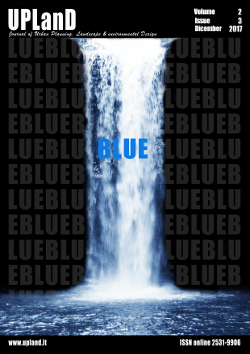Cyanobacterial mats from the Carrizal, a geothermal spring pool in Mexico
Main Article Content
Abstract
Cyanobacterial microflora is very diverse in different habitats over the world and closely connected with the ecology of the habitat. In particular, extreme habitats are colonised by numerous specialised morpho- and ecotypes which are unique to these ecologically specialised environments. A variety of methods are needed to characterize cyanobacterial assemblages in thermal water environments. We report here on the community structure of the cyanobaterial mats at the hot spring of the alkaline ad low sulphide artificial pool of “Carrizal” (Villa Emiliano Zapata, Mexico). The most common organisms were Anabaena sp., Phormidium sp. and Pseudoanabaena sp. Some filamentous cyanobacteria showed a 98%-95% 16S rDNA gene similarity with Oscillatoria sp. and cluster together with other filamentous cyanobacteria from the thermal environments.
Downloads
Article Details

This work is licensed under a Creative Commons Attribution-NonCommercial-NoDerivatives 4.0 International License.
Authors who publish with this journal agree to the following terms:- Authors retain copyright and grant the journal right of first publication with the work simultaneously licensed under a Creative Commons Attribution License that allows others to share the work with an acknowledgement of the work's authorship and initial publication in this journal.
- Authors are able to enter into separate, additional contractual arrangements for the non-exclusive distribution of the journal's published version of the work (e.g., post it to an institutional repository or publish it in a book), with an acknowledgement of its initial publication in this journal.
- Authors are permitted and encouraged to post their work online (e.g., in institutional repositories or on their website) prior to and during the submission process, as it can lead to productive exchanges, as well as earlier and greater citation of published work (See The Effect of Open Access).
References
Andresson, 0.S., and 0.H. Fridjónsson. (1994). The sequence of the single 16s rRNA gene of the thermophilic eubacterium Rhodothemus marinus reveals a distant relationship to the group containing Flmibacter, Bacteroides, and Cytophaga species. Journal of Bacteriology 176, 6165-6169.
Bing-MuHsu, Po-HuaMa, Tai-ShengLiou, Jung-ShengChen, Feng-ChengShih. (2009). Identification of 18S ribosomal DNA of Acanthamoeba from hot spring recreation areas in the central range, Taiwan. Journal of Hydrology 367(3-4), 249-254.
Brock, T.D. (1986). Introduction: an overview of the thermophiles, p. 1-16. In T. D. Brock (ed.), Thermophiles. Wiley-Interscience, New York.
Castenholz, R.W. (1978). The biogeography of hot spring algae through enrichment cultures. Mitteilungen Internationale Vereinung Limnologie 21, 296–315.
Cennamo, P., & Ciniglia, C. (2017). The algal diversity in the phlegrean fields (Campania, Italy) archeological districts: an overview. UPLanD – Journal of Urban Planning, Landscape & environmental Design, 2(2), 97-106.
Ciniglia, C., Valentino, G.M., Cennamo, P., De Stefano, M., Stanzione, D., Pinto, G., & Pollio, A. (2005). Influences of geochemical and mineralogical constraints on algal distribution in acidic hydrothermal environments: Pisciarelli (Naples, Italy) as a model site. Archiv für Hydrobiologie, 162, 121-142.
Ciniglia, C., Yoon, H.S., Pollio, A., Pinto, G., & Bhattacharya, D. (2004). Hidden biodiversity of the extremophilic
Cyanidiales red algae. Molecular Ecology, 13, 18-27.
Doyle, J.J., Doyle, J.L. (1990). Isolation of plant DNA from fresh tissue. Focus, 12, 13-15.
Elbanna, K., Lütke-Eversloh, T., Van Trappen, S., Mergaert, J., Swings, J., & Steinbüchel, A. (2003). Schlegelella thermodepolymerans gen. nov., sp. nov., a novel thermophilic bacterium that degrades poly (3-Hydroxybutyrate-co-3-mercaptopropionate). International Journal of Systematic and Evolutionary Microbiology 53(4), 1165-1168.
Ferris M.J., Muyzer G, Ward D.M. (1996). Denaturing gradient gel electrophoresis profiles of 16S rRNA-defined populations inhabiting a hot spring mat community. Applied and Environmental Microbiology 62, 340–346.
Hall, T.A. (1999). BioEdit: a user-friendly biological sequence alignment editor and analysis program for Windows 95/98/NT. Nucleic Acids Symp Ser, Oxford University Press, 41,95–98.
Hindàk, F. (2001). Thermal microorganisms from a hot spring on the coast of Lake Bogoria, Kenia.” Beiheft, Nova Hedwigia, 123, 77-93.
Mangoni, F., & Sgobbo, A. (2013). Pianificare per lo sviluppo. Un nuovo insediamento ai margini della metropoli. Napoli, IT: Edizioni Scientifiche Italiane.
Moccia, F.D., & Sgobbo, A. (2016). Flood hazard: planning approach to risk mitigation and periphery rehabilitation. In S. Syngellakis (ed.), Management of Natural Disasters (pp. 129-144). Southampton, UK: WIT Press. doi: 10.2495/978-1-84566-229-5/012
Sgobbo, A. (2011). Analisi economica e finanza di progetto per la gestione dei parchi urbani. In A. Claudi de Saint Mihiel (ed.), La valorizzazione dei Parchi Urbani (pp.183-193). Napoli, IT: Clean Edizioni.
Ward D.M., Ferris M.J., Nold S.C., & Bateson M.M. (1998). A natural view of microbial biodiversity within hot spring cyanobacterial mat communities. Microbiology and Molecular Biology Reviews, 62, 1353–1370.
Ward D.M., Santegoeds C.M., Nold S.C., Ramsing N.B., Ferris M.J., & Bateson M.M. (1997). Biodiversity within hot spring microbial mat communities: molecular monitoring of enrichment cultures. Antonie van Leeuwenhoek 71, 143–150.

